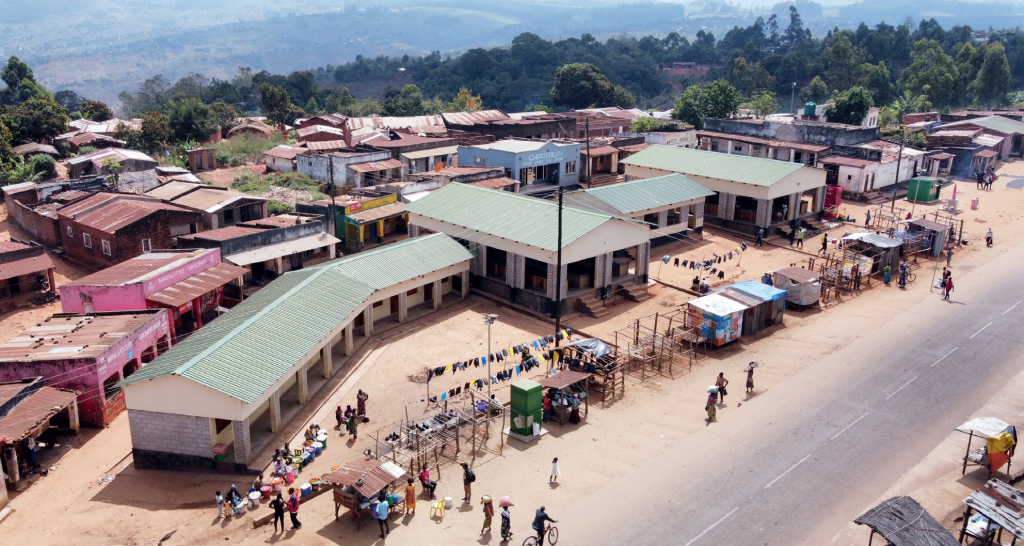Ntambanyama Market rising
Fridays are busy days at Ntambanyama Market along the Thyolo-Thekerani-Muona Road.
Money changes hands fast when thousands from the hills of Thyolo District and neighbouring Nsanje meet.
However, every day is a chance to make money for fish seller Madalitso Andimoni, 29.
“Since I moved to this new market, I make money come rain or shine,” he brags.
The father of one has been a fishmonger since 2017.

Until last year, he was trading in a shaky stall made of poles, grass, cartons and plastics.
“I incurred huge losses as heavy rains, sunlight and strong winds left fish rotting, dusty or shrinking. I sometimes accepted K15 000 for a heap worth K20000 because the fish weren’t appealing anymore,” he says.
This has become history since dozens of traders occupied the market facilities constructed by Thyolo District Council under the Governance Enabled Service Delivery (Gesd).
The World Bank funds the project implemented by the Government of Malawi through the Ministry of Local Government, Unity and Culture.
District councils earn based on their performance—especially financial management, transparency and project implementation—to enhance service delivery.
The tea-growing district used last year’s rewards to construct the market and two-story Boma Primary School.
Handing a customer some fish and change, Andimoni says: “This investment is rewarding that I now meet customers in a shade where my fish are often sold out before they shrink or get dusty.
“Unlike other communities that shun new markets, even our customers are happy to do business in a decent place.”
His business capital has surged from K17 000 to K400 000 in eight years.
“Daily, I take home a profit of about K25 000, up from about K3 000 weekly,” he states.
To Orton Chikumbe of Njale Village in Traditional Authority Khwethemule, Ntambanyama is a lifeline to everyday needs.
“With the safe business space, investors are increasingly building shops here because the permanent market guarantees them business all year. I will not be surprised if banks occupy one of the emerging buildings,” says the man, buying fish.
The new market delights traders once forced to halve the selling prices of their perishable goods, especially vegetables and fruits, by sunset.
Says Esther Yakobe, a mother of three from Yakobe Village: “Prices were falling dramatically when we were selling in the sun.
“Currently, we are reaping the benefits of our green produce without worrying that they would lose value by sunset. My vegetables sell fast because customers find them fresh and under one roof. Previously, we were scattered in the open,”
Yakobe cannot wait for electricity to keep business ticking beyond sunset.
“A lot has changed, but we can make more money if we stop chasing the sun,” she says.
Thyolo district director of public works Isaac Udindo says Electricity Supply Corporation of Malawi (Escom) will connect the market to the national grid this month.
“Tubing and wiring is already complete. Escom should connect the market soon”, he says.
Thokozire Munthali Chingeni says the new market testifies to the power of putting local communities and leaders at the centre of every public project
“Sellers and buyers at the roadside market were prone to accidents and business losses. From the start, the council worked closely with local leaders, especially T/A Khwethemule, to encourage vendors to vacate the roadsides for the new market facilities. Our collaboration has paid off,” she says.





